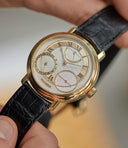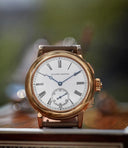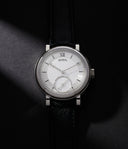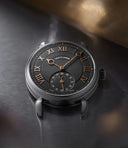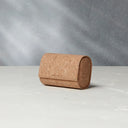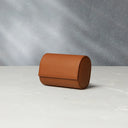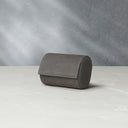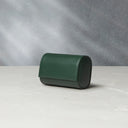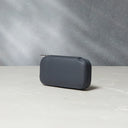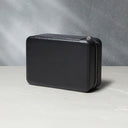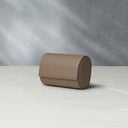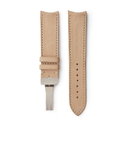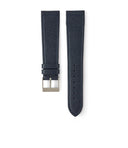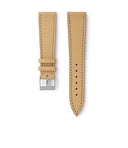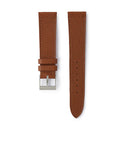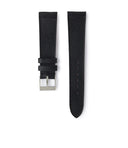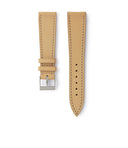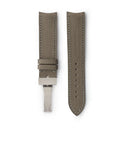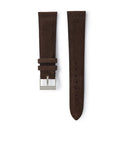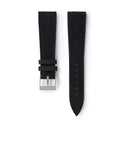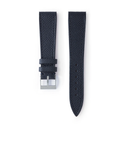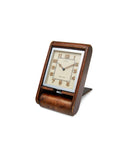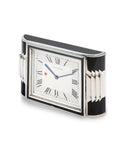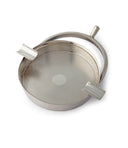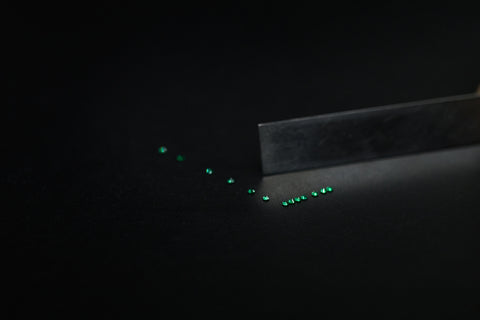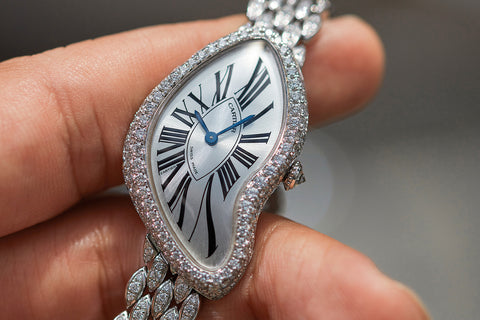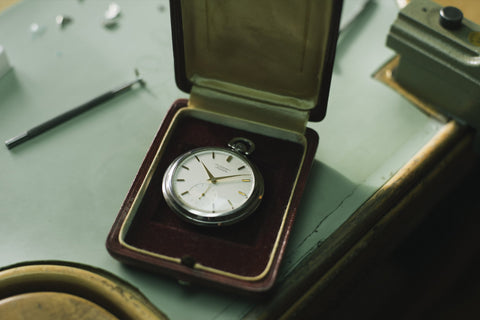Chopard was founded as a watchmaking house by Louis-Ulysse Chopard in 1860, with the brand acquired by the Scheufele family in 1963. In 1993, the brand, under the stewardship of Karl-Friedrich Scheufele began its pursuit of an in-house calibre. The project, which was helmed by Jean-Frederic Dufour (current chief executive of Rolex) and tapped the mind of watchmaker Michel Parmigiani, yielded the slim, beautiful and efficient micro-rotor calibre 1.96 in 1996. The movement was first put in the new Reference L.U.C 1860, a watch that paid homage to the brand’s founder.
This rare, high jewellery iteration of the 1860, was designated Reference 171870-1001 (Reference 1870 for short). This is perhaps due to the fact that the reference, encrusted with 284 diamonds totalling 2.88 carats, was such a special, high jewellery iteration of the 1860 that it warranted its own special designation. The stones are graded FC, a reference to their colourless quality. The 36mm white gold case is covered extensively in diamonds – the sloping bezel features brilliant round cut stones with gems of a similar cut adorning the long, tapering lugs. The flanks of the midcase, flowing into the lugs, also feature two uninterrupted rows of brilliant round cut gems. The knurled, three-position crown is signed with the L.U.C mark.
The gems on the dial have been lent functionality – 11 baguette cut stones form the hours chapter while the outermost of the concentric diamonds rings that the dial is paved with features 60 stones that act as the minutes scale. At 6 o’clock lies the subsidiary seconds register. It features a fluted rim followed by a black printed chapter of seconds on a brushed surface. The innermost section features concentric circular engine turning, which repeats the pavé setting motif of the dial. This seconds register overlaps with the discreet date indicator that is quickset by pulling the crown out to the second position. The only dial printing is the brand mark at 12 and the word ‘automatic’ in the subsidiary seconds register. The dauphine-style hours and minutes hands are faceted while the seconds indicator is a simple, slim pointer.
The lugs are 20mm apart and feature a black alligator-grained leather strap secured by a white gold signed clasp a adorned on the outer surface with brilliant cut stones.
The exhibition caseback is secured by eight screws. Details such as the serial and reference numbers in the limited series are engraved here. The watch also comes with an optional closed caseback that can be screwed in place. This caseback features the Chopard and L.U.C marks engraved on it.
The slim self-winding calibre 1.96 measures 27mm across and stands just 3.3mm tall, aided by the solid 22k gold micro rotor that winds it. It is finished finely, with the bridges adorned with Côtes de Genève and the edges decorated with anglage. The micro rotor wears a fluted decoration that is only interrupted by the ‘L.U.C’ embossed detail. The brand mark, country of origin, calibre reference, jewel count (29), serial number and adjustment to five positions are engraved in gold on the bridges. The Geneva seal on the movement is accompanied with corresponding paperwork from the The Office of Optional Control of Watches of Geneva that issues them dated from 2008. The movement offers 65 hours of reserve and is a COSC-certified chronometre. The calibre 1.96 also marks this example as a relatively early example. The brand would later transition to the calibre 96.01.
In addition to the Geneva seal documentation, the watch comes with its original bill of sale from 2010 from a Hong Kong-based retailer as well as its full set of outer and inner boxes, manual and certificate of origin.
The reference 1870 was produced in exceedingly finite numbers, with a majority of them destined for East Asia. This gem-set iteration of the 1860 is precious all the way through, with the stones lending its beautiful proportions a sense of occasion.




























































































